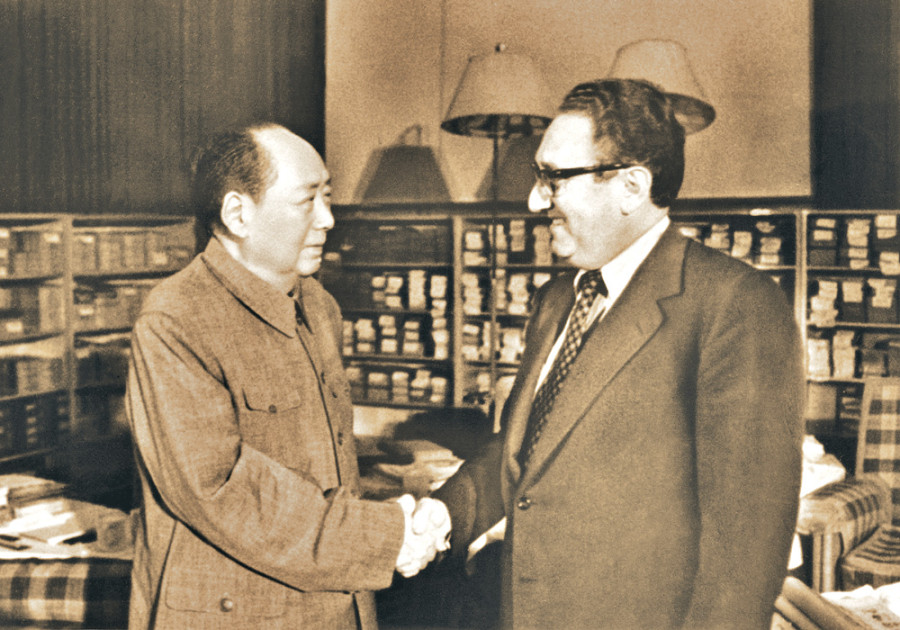Miscellaneous
The architect
As a key player of the 1972 Shanghai communiqué, Kissinger uses his latest book to delve into the nitty-gritty of the US-China bonhomie
Ramesh KC
When Time magazine journalist Strobe Talbot asked President Richard Nixon about his achievements as the President of the United States, Nixon said, “I visited China. Today, the visit, which took place in 1972, still resonates in the context of US China relation—even after 45 years.”
Dr Henry Kissinger was the architect of that visit—a visit that successfully changed the geo-politics of the world. It was a diplomatic coup which brought the US and China together against communist rival Soviet Union, at a time when despite both being communists, the relationship between the two countries remained strained. At the time, an anxious America was looking for an ally to contain the Soviet Union. China too was on the same page with its relation with the Soviet Union fast deteriorating. It was in this backdrop that Kissinger, with his crafty diplomacy, succeeded in isolating China from becoming a Soviet ally.
Dr Kissinger, a Harvard PHD, who wrote his thesis on the German philosopher Emanuel Kant, was also the National Security Advisor and Secretary of State for the President Nixon and President Ford after him. His recently published book, On China, is an intimate story of US-China relations, the bedrock of which was laid Kissinger himself. As a key player of the 1972 Shanghai communiqué, he uses his latest book to delve into the nitty-gritty of the US-China bonhomie.
He mentions an incident when Chairman Mao was sick, and asked to his tending doctor about China’s fear of encirclement by its neighbours. “We have the Soviet Union to the North and the West, India to the South and Japan to the East. If all our enemies were to unite to attack us from the North, South, East and the West, what do you think we should do?” he asked. The doctor had no idea. “Think again,” Mao said. In today’s geopolitical situation, all of China’s neighbours feel that they are encircled by China. Mao was a communist leader and a tactician well-versed in guerrilla warfare. He was also fond of the Confucian philosophy of statecraft from which he gathered inspiration and ideas. According to Kissinger, China has two thousand years of statecraft experience but America has only two hundred years of that history. Even today, it can be argued, China has transformed itself from a Communist red state into a Confucianist Nationalist one.
This book is part memoir, part history. It is Dr Kissinger’s account of China’s ascendency as a rising super power. He has vast experience with regards to advising sitting presidents—from Kennedy to Barak Obama, from Chinese leader Mao, Deng, Zamin to Jintao—reiterates his influence over modern history. As a practitioner of real politics, Dr Kissinger warns that if the US-China rivalry is not handled properly, then it might be a duel of the century. That’s why he suggested a “co-evolution” rather than a confrontation when Kissinger visited China in 1971, when the US economy was roughly five times that of China. Today, China is the world’s second largest economy, and could possibly surpass the US in the near future. Chinese military strategist Sun Tzu suggests that, “The victorious enemy is victorious first and seeks battle later.”
As an authoritarian state, China has its own fault lines. But the current generation leaders want to pursue nationalist endeavors. Kissinger, as a state man, infers that America should help to create a pacific community which includes countries like Japan, Indonesia, Vietnam, Australia and India. In the book he praises China’s rise, at the same time cautions the implications of that rise. Kissinger’s On China is a treasure trove of knowledge and information, and at the same time a memoir of experiences from a fascinating period of not just the US history, but that of the world at large.





 23.12°C Kathmandu
23.12°C Kathmandu










